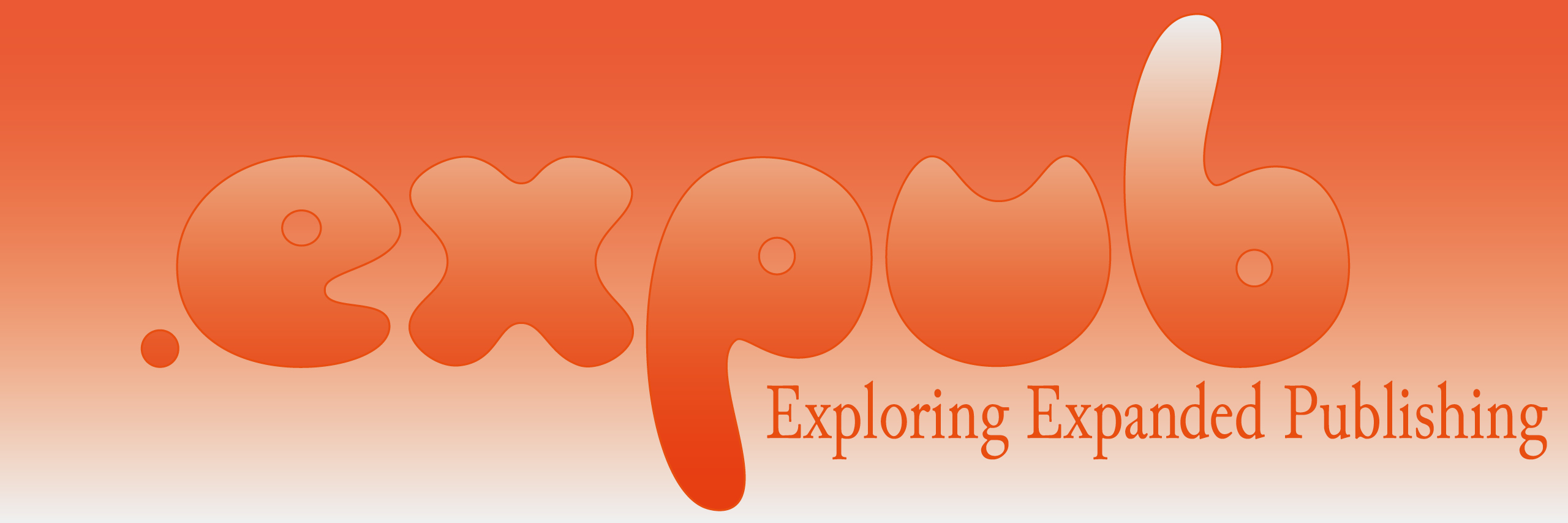.expub
Exploring expanded publishing
The project will engage artistic, scientific and independent publishers to participate in experimenting with new (combinations of) publishing formats, and in the end sum up these experiments with the proposition of an operating model for Expanded Publishing.
What is Expanded Publishing?
Expanded Publishing (EP) in its broader sense relates to going beyond typical publishing, described above, in terms of format and technology. In some similar contexts, self-reflective, extended, hybrid and urgent publishing have a different name, but they, at least partly, relate to the same point: a publishing practice that is more inclusive than traditional publishing in that is enables broader means of expression, includes more features and inter-format connections, involves readership or peers, open-sources the underlying technology for better access, integrates the metadata of a publication, experiments with non-publishable art or scientific formats (e.g. an exhibition, a conference) etc. In short, it goes beyond (= expands) the traditional.
A tendency in recent media theory has been to qualify or suspend the language of rupture or discontinuity in discussing the relations between “old” media and “new” digital technologies. Instead, older models and arrangements are understood to persist in various forms of hybridity, convergence, remediation or recuperation. At the same time, the old has to compete with the new to remain attractive: for this reason, print is becoming hypermediated, as it incorporates verbal genres and gestures in a self-conscious imitation of and rivalry with electronic media.
EP is a literal expansion of three pre-existing types of publishing: multimedia, hybrid and urgent publishing.
- Multimedia has its roots in the 1990s and the early internet culture. It is commonly defined as “communication that uses a combination of different content forms such as text, audio, images, animations, or video into a single interactive presentation, in contrast to traditional mass media, such as printed material or audio recordings, which features little to no interaction between users”. (Wikipedia) In short, multimedia is a synthesis of different types of media formats brought together in a single presentation or on a single page.
- Hybrid publishing emerged after the rise of smart devices, such as smartphones and tablets, where the content is published in different medium-specific formats that highlight the distinction between physical and virtual content. Examples are physical books, PDFs, ePUBs, digital long-form essays, websites etc.
- In urgent publishing, which emerged over the past years, the notion of time was added to the previous two types of publishing mentioned above. In times of crises and information overload, the ability to make knowledge public at a specific (often urgent) moment in time becomes pressing – aside from formats and quality of the content, the time component of actual publishing becomes hugely important. New strategies such as riso printing and xerox copy machines grow in importance. Decentralised approaches are an essential aspect of urgent publishing, especially in its political implications.
These practices are rooted in independent, art, research and science publishing, artistic research, DIY and experimental practices, perpetrated by underground and technology activists and various small publishers who need to experiment and innovate in order to remain at the forefront and avoid being overshadowed.
—–

This project has been funded with the support from the European Commission. This communication reflects the views only of the author, and the Commission cannot be held responsible for any use which may be made of the information contained therein.


